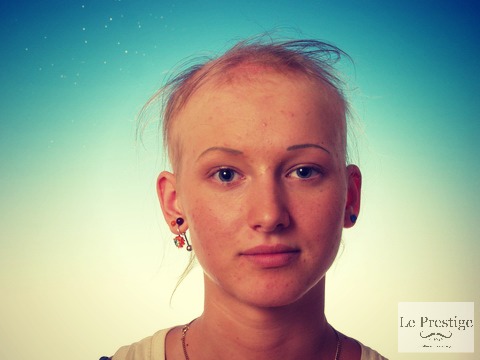
By Jorge Zavala
Executive Director
September is Alopecia Awareness Month in the United States. While many have come across the term alopecia, few understand exactly what it is.
Alopecia is the medical term for a hair loss condition that can affect the entire scalp, or smaller localized areas, and may be temporary or permanent. Other parts of the body where hair normally grows can also be affected. Alopecia is believed to have underlying cause or may simply be part of the natural ageing process.
The most common form of alopecia is male-pattern baldness, also known as androgenic alopecia. Male pattern baldness tends to run in families and usually starts in the late 20s or early 30s. Initially there may be just some thinning of the hair and a receding hairline. Gradual hair loss occurs at the temples and crown of the head and, eventually, the spots with noticeable hair loss increase in size until the entire top of the head is left without hair. A noticeable characteristic during this time is that some hair remains on the back and sides of the head. In some men, complete baldness can occur. Men who start losing their hair at an early age tend to develop more extensive baldness.
Female pattern baldness occurs in some women as they get older and becomes more noticeable after menopause. The hair begins to thin at the front and crown of the head : this also tends to run in families.
Small areas of patchy hair loss are caused by a condition called alopecia areata. The patches of baldness are about the size of a large coin and may come and go. Alopecia areata affects about 1 in 100 people, mostly teenagers and young adults. Other areas besides the scalp may be affected.
Alopecia universalis is a severe form of alopecia areata that results in permanent loss of all body hair, including eyebrows, eyelashes, and hair in the pubic area and armpits.
What causes this?
Hair grows from specialised cells called hair follicles. In some people, androgens (male sex hormones) cause the hair follicles to shrink and cease to produce hair as normal. This sensitivity of the hair follicles to androgens is believed to be genetic and the main cause of male pattern baldness.
The cause of alopecia areata is unknown but it may be an auto-immune disorder. The hair follicles are usually not permanently damaged and in many cases the hair grows back in a few months: 1in 5 cases are genetic. A person with alopecia areata is more likely to have or to develop other autoimmune conditions such as thyroid disease, diabetes and vitiligo (a condition that produces white patches on the skin). At times, all body hair may be lost (alopecia universalis). The chance of hair regrowth is poorer for people with alopecia universalis and extensive alopecia areata.
Other causes of localised hair loss include:
Can alopecia be treated?
There is a strong possibility of aiding alopecia. In some cases, such as completion of chemotherapy, or treatment of a fungal scalp infection, your hair will start to grow again. Topical solutions, such as tonics and serums, help the regeneration and rejuvenation of the hair follicle.
While alopecia areata is difficult to treat, there are solutions aiding in the regrowth of hair in specified area. Diverse topical treatments, such as Quick Growth by M&J Products, help regenerate hair in a time frame of 3-6 months, varying by age, gender, and condition. Minoxidil is also considered an option for alopecia, but the side-effects are considered uncomfortable: nausea, vomiting, blurry vision.
Hair loss or thinning can be a very serious problem for both medical and emotional reasons. However, in some instances, the symptom of hair loss may be a sign that one may encounter a more diverse set of ailments present in the body.
Le Prestige du Monde will be showcasing a diverse set of segments promoting understanding and awareness of alopecia.
Jorge Zavala, PhD., studied medicine at Morelia University's School of Medicine in central Mexico, He became very interested in helping others, using his passion for people and community to go hand in hand with his interests in community-development, advocacy, and politics. His background in medicine (allopathic, homeopathic, organic), education, public administration, business management, real estate, and natural sciences allows him to understand and make sense of various conditions as they relate to the medical and social environments of a person and community.
Executive Director
September is Alopecia Awareness Month in the United States. While many have come across the term alopecia, few understand exactly what it is.
Alopecia is the medical term for a hair loss condition that can affect the entire scalp, or smaller localized areas, and may be temporary or permanent. Other parts of the body where hair normally grows can also be affected. Alopecia is believed to have underlying cause or may simply be part of the natural ageing process.
The most common form of alopecia is male-pattern baldness, also known as androgenic alopecia. Male pattern baldness tends to run in families and usually starts in the late 20s or early 30s. Initially there may be just some thinning of the hair and a receding hairline. Gradual hair loss occurs at the temples and crown of the head and, eventually, the spots with noticeable hair loss increase in size until the entire top of the head is left without hair. A noticeable characteristic during this time is that some hair remains on the back and sides of the head. In some men, complete baldness can occur. Men who start losing their hair at an early age tend to develop more extensive baldness.
Female pattern baldness occurs in some women as they get older and becomes more noticeable after menopause. The hair begins to thin at the front and crown of the head : this also tends to run in families.
Small areas of patchy hair loss are caused by a condition called alopecia areata. The patches of baldness are about the size of a large coin and may come and go. Alopecia areata affects about 1 in 100 people, mostly teenagers and young adults. Other areas besides the scalp may be affected.
Alopecia universalis is a severe form of alopecia areata that results in permanent loss of all body hair, including eyebrows, eyelashes, and hair in the pubic area and armpits.
What causes this?
Hair grows from specialised cells called hair follicles. In some people, androgens (male sex hormones) cause the hair follicles to shrink and cease to produce hair as normal. This sensitivity of the hair follicles to androgens is believed to be genetic and the main cause of male pattern baldness.
The cause of alopecia areata is unknown but it may be an auto-immune disorder. The hair follicles are usually not permanently damaged and in many cases the hair grows back in a few months: 1in 5 cases are genetic. A person with alopecia areata is more likely to have or to develop other autoimmune conditions such as thyroid disease, diabetes and vitiligo (a condition that produces white patches on the skin). At times, all body hair may be lost (alopecia universalis). The chance of hair regrowth is poorer for people with alopecia universalis and extensive alopecia areata.
Other causes of localised hair loss include:
- Fungal infection of the scalp such as ringworm
- Overuse of hot comb or hair dryer
- Hairstyles that pull on the hair
- Deliberately pulling out of the hair (trichotillomania)
- Permanent skin damage from burns or serious skin diseases
- Radiation therapy
- Chemotherapy
- Stress (including bereavement or stress of major surgery)
- Severe illness
- Thyroid disorders
- Pregnancy
- Post-partum (after having a baby)
- Some prescription drugs and high doses of Vitamin A
Can alopecia be treated?
There is a strong possibility of aiding alopecia. In some cases, such as completion of chemotherapy, or treatment of a fungal scalp infection, your hair will start to grow again. Topical solutions, such as tonics and serums, help the regeneration and rejuvenation of the hair follicle.
While alopecia areata is difficult to treat, there are solutions aiding in the regrowth of hair in specified area. Diverse topical treatments, such as Quick Growth by M&J Products, help regenerate hair in a time frame of 3-6 months, varying by age, gender, and condition. Minoxidil is also considered an option for alopecia, but the side-effects are considered uncomfortable: nausea, vomiting, blurry vision.
Hair loss or thinning can be a very serious problem for both medical and emotional reasons. However, in some instances, the symptom of hair loss may be a sign that one may encounter a more diverse set of ailments present in the body.
Le Prestige du Monde will be showcasing a diverse set of segments promoting understanding and awareness of alopecia.
Jorge Zavala, PhD., studied medicine at Morelia University's School of Medicine in central Mexico, He became very interested in helping others, using his passion for people and community to go hand in hand with his interests in community-development, advocacy, and politics. His background in medicine (allopathic, homeopathic, organic), education, public administration, business management, real estate, and natural sciences allows him to understand and make sense of various conditions as they relate to the medical and social environments of a person and community.


 RSS Feed
RSS Feed


